Infrared saunas offer most of the same benefits as traditional (Finnish) saunas, including improved recovery, stress management, weight loss and more. Plus, some infrared saunas — depending on the specific type of light they emit — can provide skin health benefits.
My wife and I purchased our first infrared sauna (the Sunlighten mPulse) in 2022, and have been using one almost daily ever since.
This article lists the most significant infrared sauna health benefits and highlights the research and scientific evidence behind each potential outcome.
Throughout, I’ll also tell you about the benefits we have personally noticed since we started incorporating regular infrared sauna bathing into our routine.
How Infrared Sauna Technology Works
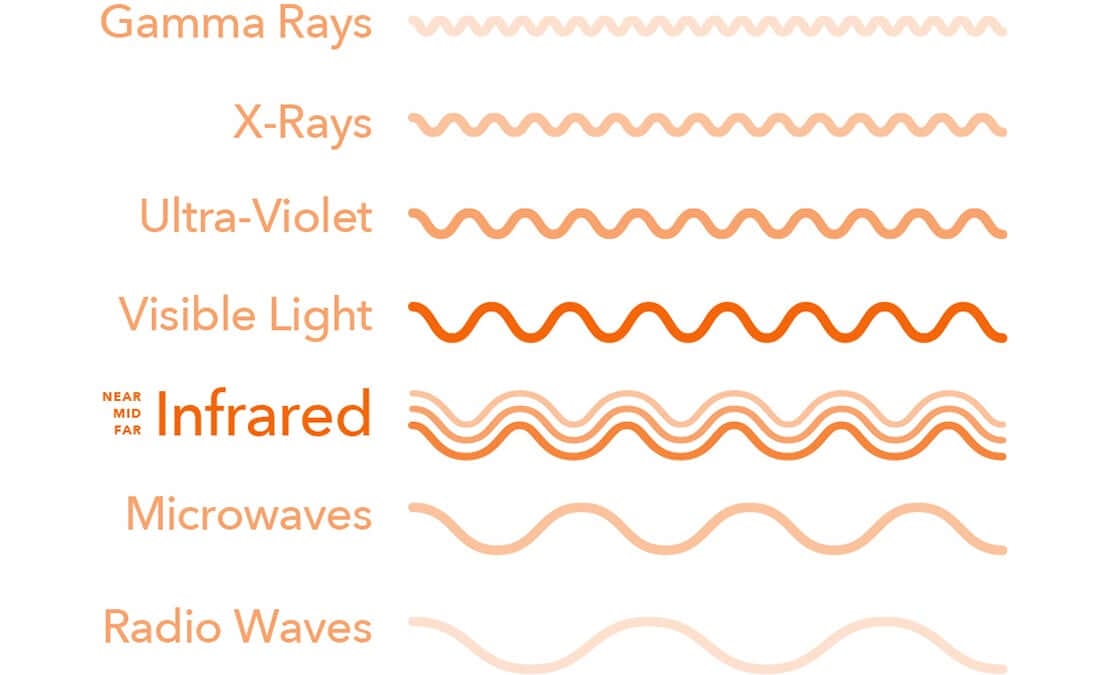
Infrared light is part of the natural electromagnetic spectrum, wedged between visible light and microwaves. In other words, infrared light is invisible. However, depending on its wavelength, you can feel it as heat.
The infrared light spectrum is divided into near (NIR), mid (MIR) and far (FIR), depending on photon wavelength (frequency) and how much energy those photons carry.
For example, your TV’s remote control uses near infrared technology, which you can neither see nor feel. On the other side of the spectrum is far infrared, which you can actually feel as radiant heat.
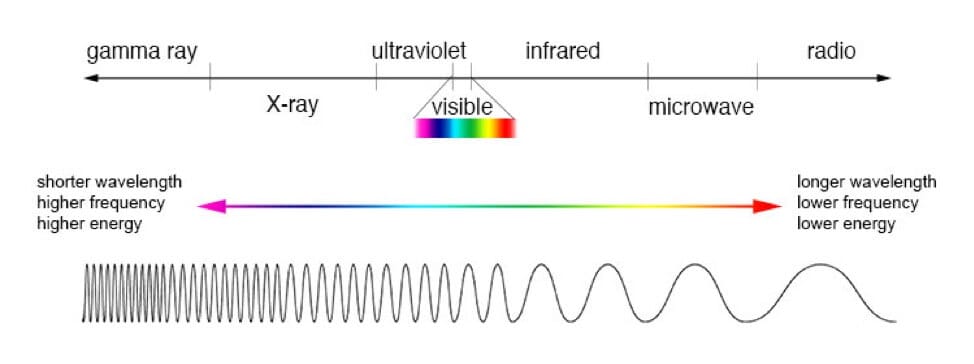
The way infrared technology works is relatively simple: depending on its wavelength, infrared light penetrates the skin and nudges cells to stimulate warmth, growth and release, resulting in the many benefits we’ll discuss below.

The way it technically works is that the infrared light stimulates light receptors inside the mitochondria. Remember, mitochondria is like a power plant inside each cell; normally, the energy your cells use comes from glucose or ketones, but light can be used as well.
Most of the infrared saunas on the market today use heating technology that’s based on far infrared radiation to make you sweat and to support your overall health.
That’s because far infrared light can penetrate both the epidermis and the dermis (the two outermost layers of the skin) and reach all the way into the fat-rich subcutaneous tissue (also known as subcutis or hypodermis) where your sweat glands are located.
In fact, studies have shown that far infrared radiation can penetrate up to 1.5 inches (4 cm) below the surface of the skin. Mid infrared light can only penetrate your soft tissue (dermis), and near infrared light is limited to penetrating your epidermis.
As a result, near infrared light is great for improving skin health, stimulating mitochondria, speeding up wound healing and increasing collagen production.
11 Infrared Sauna Benefits
1. Relieves Stress and Tension
The reason most people feel better after a sauna session is because heat exposure elevates serotonin levels. Studies have even shown that a single sauna treatment can improve the symptoms of major depression for as long as six weeks.
It’s worth noting that the stress induced by an infrared sauna does temporarily raise cortisol levels. However, thanks to the mechanism of hormesis, consistent sauna use helps the body adapt, thus lowering cortisol levels in the long run (as demonstrated in this study performed on young women).
Scientific evidence aside, I feel relaxed and at peace with the world every time I emerge from a sauna. It’s as if any tension I have melts away in the heat. That’s one of the reasons why I enjoy regular sessions in my infrared sauna (and my wife feels the same way).
2. Improves Recovery and Circulation
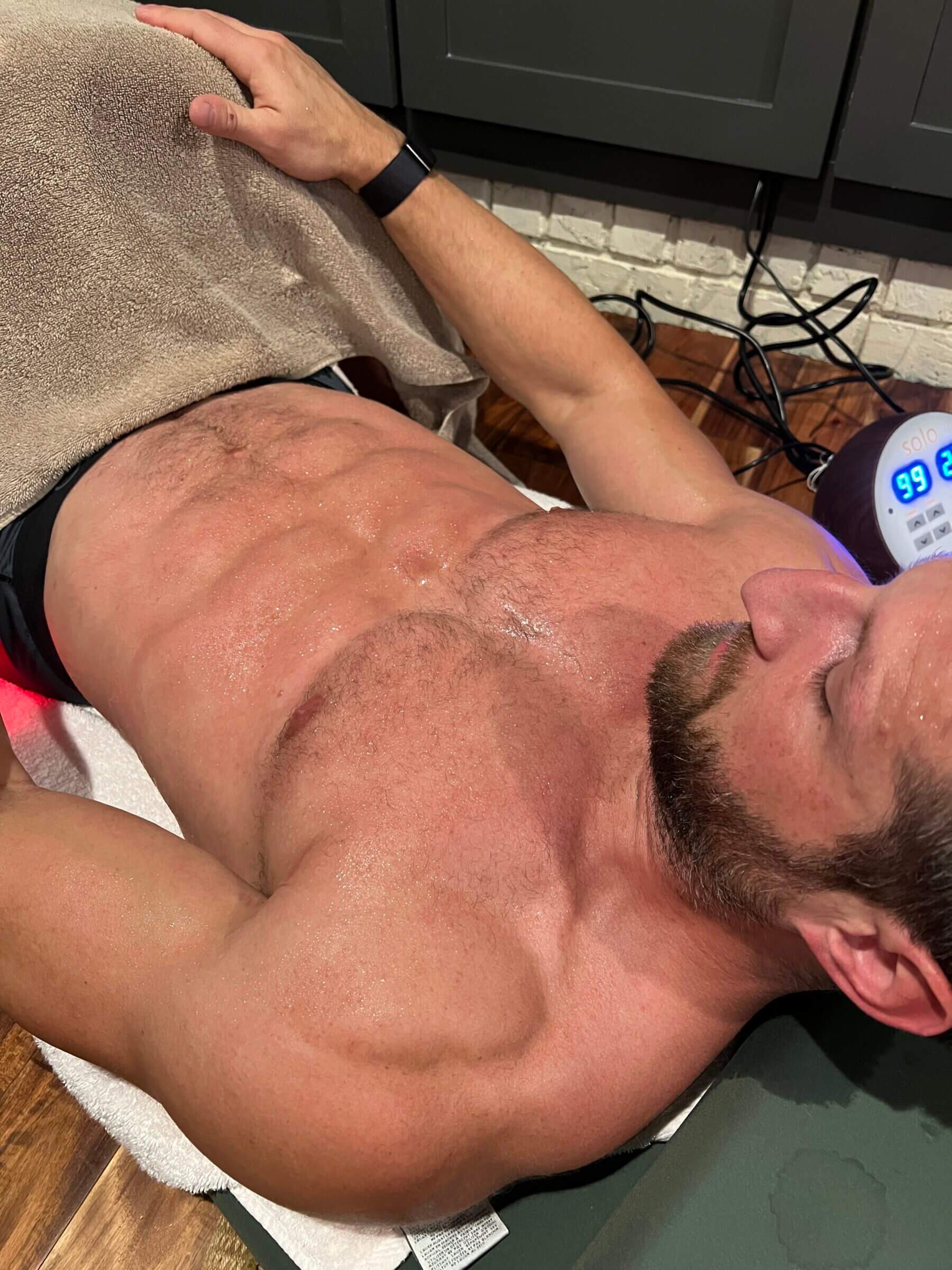
The heat from an infrared sauna causes your blood vessels to dilate, thus increasing blood flow and improving circulation. As a result, your heart can pump more nutrients and oxygenated blood to the parts of your body where they’re needed.
In fact, one study has shown that a single infrared sauna treatment can increase blood flow of the brachial artery by 68% after only 15 minutes. Additionally, the study shows that blood flow can remain elevated for as long as 30 minutes after the treatment.
This improved blood flow and nutrient delivery speeds up muscle recovery.
Remember, muscle recovery is all about improving blood flow. That’s why percussion massage guns (like the Theragun) and electric muscle stimulation devices (like the PowerDot) are so effective: they increase blood flow to the treated areas.
Infrared saunas improve blood flow throughout your entire body. In fact, a study published in the Journal of Athletic Enhancement concluded that far infrared heat improved neuromuscular performance of pro athletes by increasing their testosterone/cortisol ratio. As a result, those athletes were able to recover quicker between training sessions. Another study demonstrated that infrared light can increase blood flow in the brain.
I’ve been using my infrared sauna to recover faster after intense workouts and I’ve noticed less soreness (especially after lifting heavy weights).
To further improve muscle recovery after intense workouts, you could pair sauna bathing with compression therapy, which helps flush fluids and metabolites out of limbs.
3. Provides Temporary Pain Relief

I apply heat any time I suffer from muscle or joint pain after intense workouts, because increasing the flow of oxygenated blood to the affected area temporarily relieves pain.
As I explained above, infrared saunas dramatically increase blood flow because they can penetrate your tissue deeper than regular saunas or a hot bath.
As a result, infrared heat therapy is an excellent way to reduce pain and inflammation.
Related: You can also use low-level laser therapy to treat joint pain. I treated a nagging shoulder injury with a device called Kineon Move+ Pro (you can use it on any joint), and was impressed with the results.
4. Mimics a Cardiovascular Workout
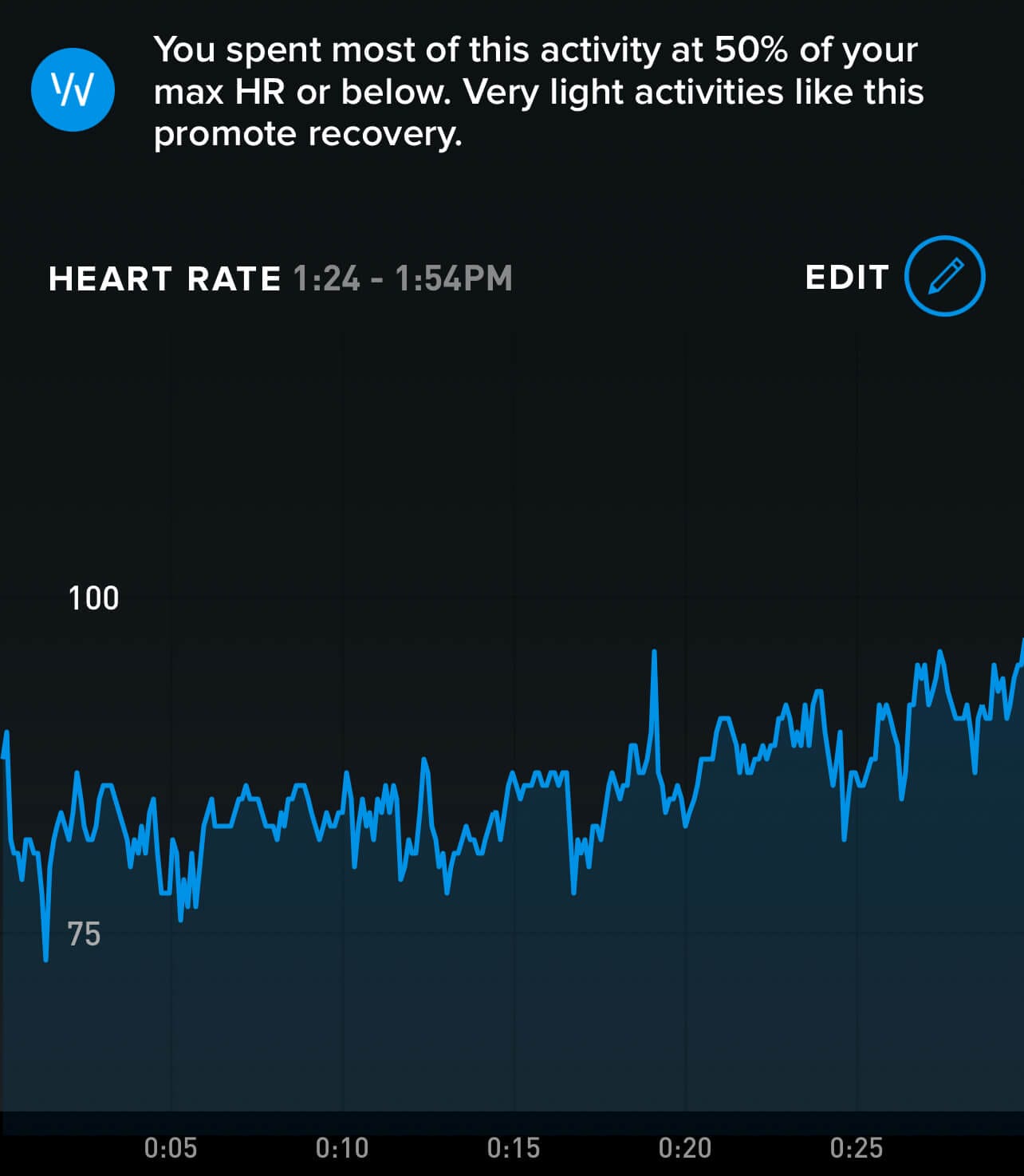
During my first session in our far infrared sauna, I told my wife that I noticed a significant increase in heart rate due to the stress induced by the infrared waves.
As a result, spending 30 minutes in an infrared sauna mimics a light to moderate cardiovascular workout.
During one of my recent sauna sessions, I decided to record my heart rate using Apple Watch and WHOOP Strap. As you can see in the graph above, my heart rate increased to 101 beats per minute, averaging at 86 bpm until I got out of the sauna.
That’s roughly the same heart rate that I would have during a brisk walk.
Note that the increased heart rate and lower blood pressure caused by infrared rays means they might not be ideal for all people. See the side effects section below for more information.
5. Burns Calories (Weight Loss)
As a result of the increased heart rate, your body also increases its metabolic rate, thus burning more energy in the form of calories.
To find out roughly how many calories one session burned, I used my Apple Watch and WHOOP strap to record the sauna session as a workout.
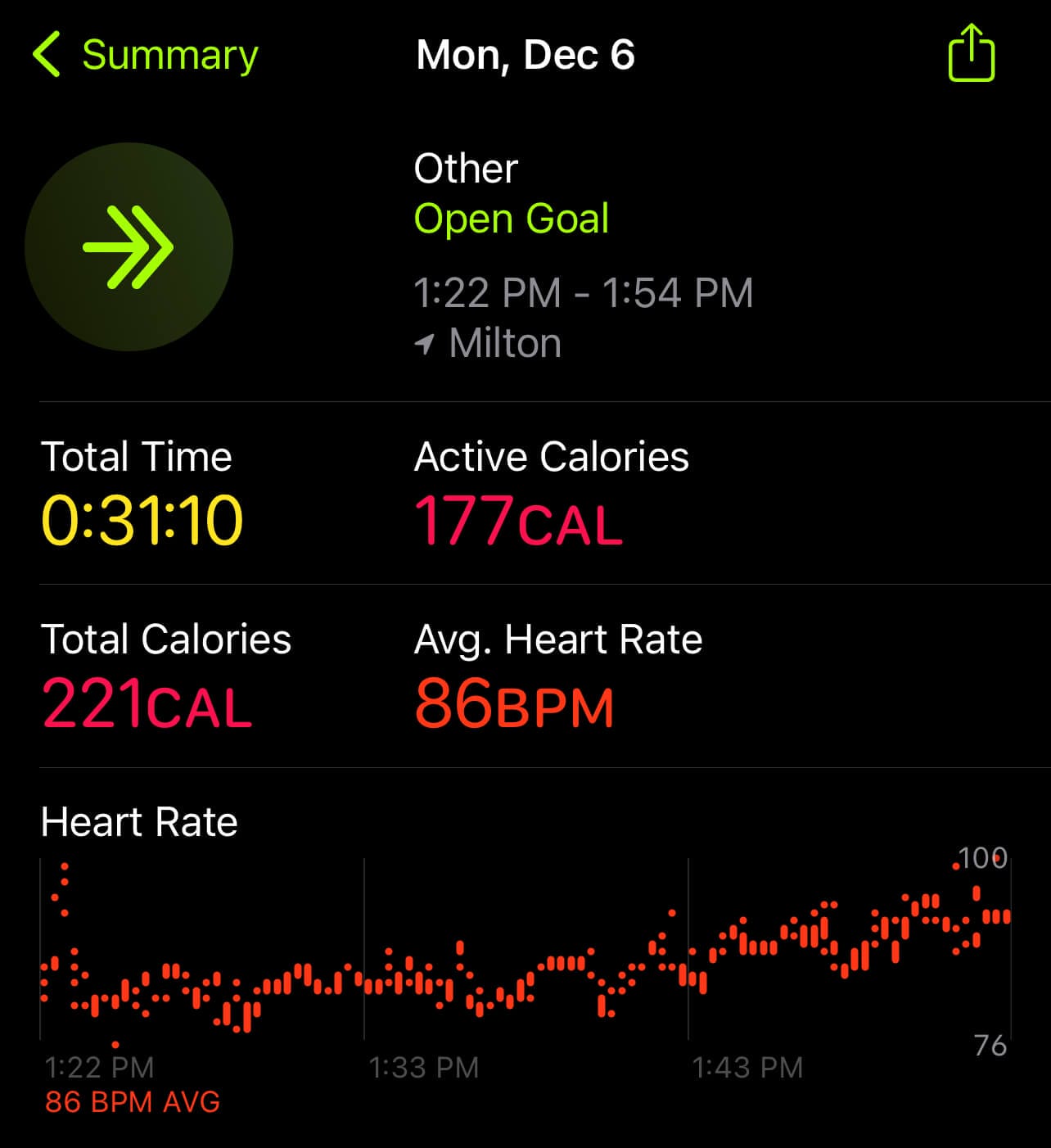
Based on the findings from both fitness trackers, I burned approximately 177 additional calories during my 30-minute sauna session. That’s not too bad considering that I didn’t have to move a finger.
While burning extra calories can certainly support your weight loss efforts, keep in mind that much of the weight you’re losing during a sauna bath is water weight (because of how much you sweat).
More importantly, note that losing weight is a byproduct of a healthy lifestyle that involves a species-appropriate diet for humans, sufficient sleep and other factors. You can learn more about that in my article about how to live a healthy lifestyle.
6. Increases Resistance to Illness

As I was growing up, I was told that regular sauna sessions reduce your chances of getting sick. At the time, I didn’t really understand why, but I assumed it was because you’re sweating out any viruses you might be harboring.
That’s not literally how it works. Instead, an infrared sauna increases your core body temperature, tricking your immune system into thinking that you’re running a low-grade fever — a condition called hyperthermia.
Hyperthermia describes a condition of having a body temperature greatly above normal, whereas hypothermia is defined as having a body temperature below 35 degrees Celcius.
As a result, your immune system triggers the release of white blood cells, lymphocytes, neutrophils and interferons – all part of the body’s antiviral army.
Additionally, studies suggest that the increase in body temperature causes the release of heat shock proteins that deter viruses from reproducing and reduces the amount of inflammatory cytokines.
One study even suggested that using a sauna can reduce your chances of catching a common cold by 50%. While colds aren’t usually life-threatening, they can have a major impact on your productivity.
I recently had a head cold (before I got my IR sauna) and the combination of congested sinuses and coughing was a major drag on my productivity. As a result, I’ll prioritize sauna use going forward (especially during the colder months of the year).
7. Helps to Get Rid of Toxins (Detoxification)
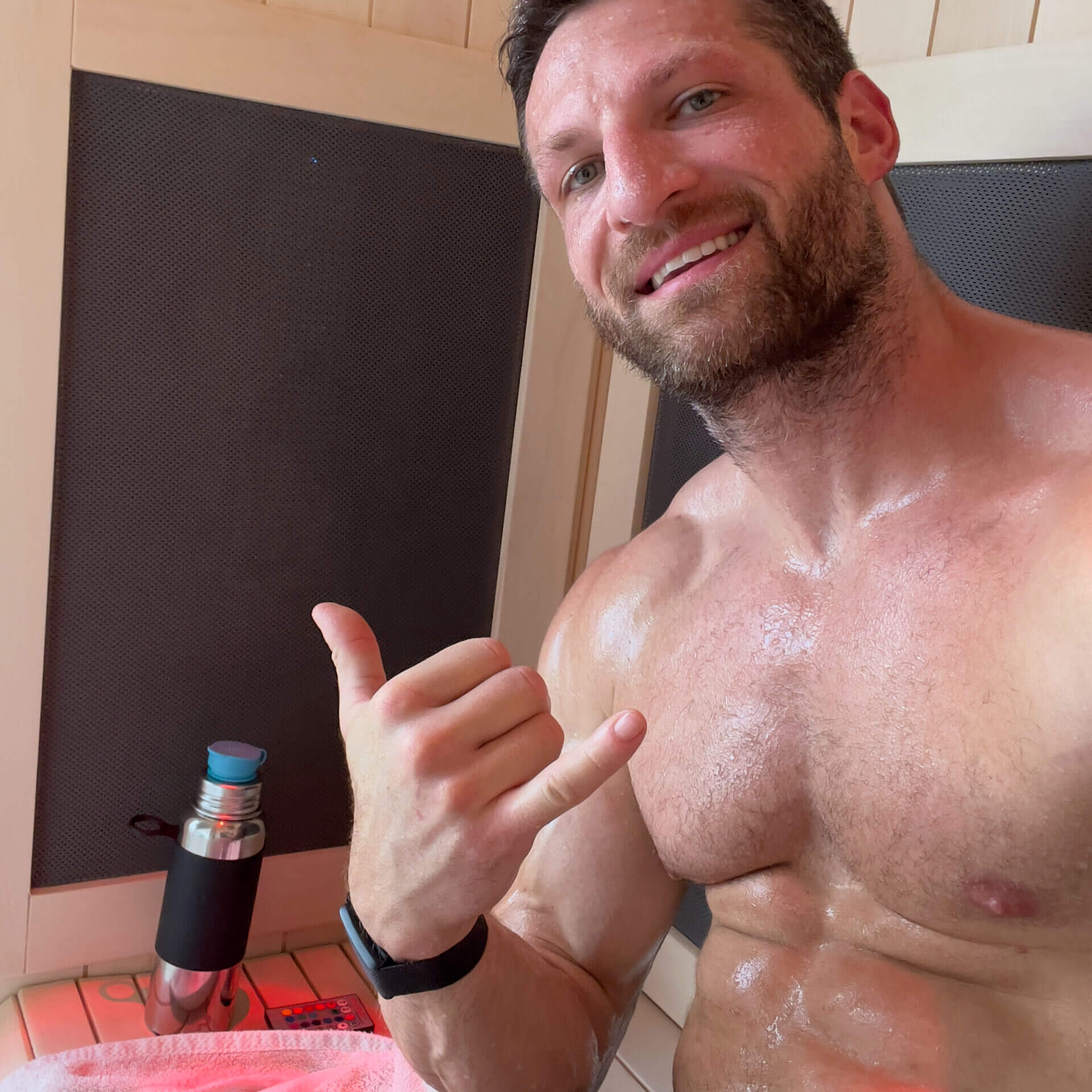
Besides helping regulate your core temperature, sweating is one the body’s preferred methods for getting rid of toxins, with respiration (breathing) and elimination (urine) being the other two.
That’s why sauna use is an excellent way to naturally detox your body. By sweating profusely, you flush out toxins such as heavy metals.
Based on a comprehensive review of heavy metal detoxification by renowned detoxification expert Dr. Dietrich Klinghardt, far infrared saunas are an excellent way to rid the body of heavy metal contamination because “infrared mobilizes specific toxins, like mercury, in deeper tissues.” In other words, infrared saunas may be more effective at eliminating toxins than traditional saunas.
Additionally, infrared saunas can help you detox if you’ve been exposed to mold. That’s because mold toxins (mycotoxins) bind to the receptors of fat cells, making it difficult for the body to excrete them via urine and stool. Far infrared rays deeply penetrate fat tissue, mobilizing the mycotoxins and helping your body to flush them out.
Removing mold spores and mycotoxins from your body is important because chronic exposure to those toxins can lead to a wide range of medical conditions, including chronic fatigue symptom.
Studies have shown that repeated thermal therapy (i.e., sauna bathing) can dramatically improve the symptoms of chronic fatigue syndrome (e.g., fatigue, pain, sleep disturbances) without causing a relapse after the treatment was discontinued.
8. Helps Lower Blood Pressure
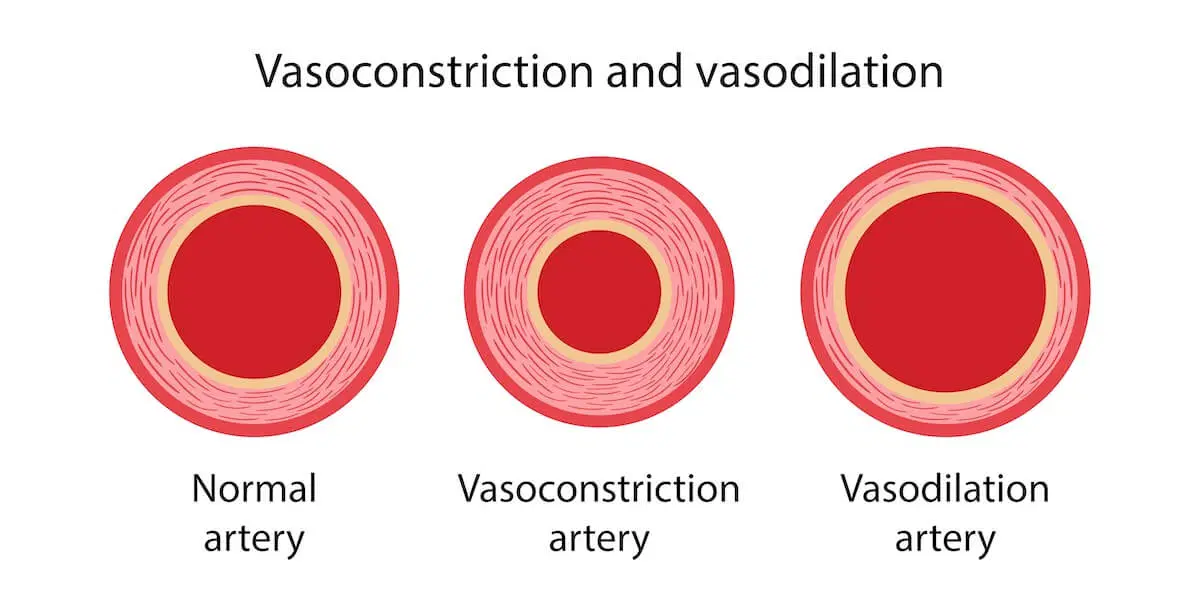
Based on a study conducted by researchers at the University of Missouri, using an infrared sauna three times per week for 30 minutes each session lowered the systolic and diastolic blood pressure of participants.
The mechanism behind that is relatively simple: sauna use dilated blood vessels, thus lowering blood pressure.
The same study also concluded that repeated thermal therapy can improve vascular endothelial function (the ability of your blood vessels to relax and contract) in patients with coronary risk factors, such as atherosclerosis.
Because of that, the researchers recommended making far infrared sauna therapy a part of the treatment protocol for such patients.
I use my infrared sauna to keep my blood vessels healthy. Think about it like this: every time you expose yourself to infrared heat, you exercise your blood vessels by making them dilate (and then contract when you get out of the sauna). That’s like a workout for your blood vessels that helps them remain flexible and reduces the chances of developing atherosclerosis or similar artery diseases.
9. Helps Build Muscle and Increases Flexibility
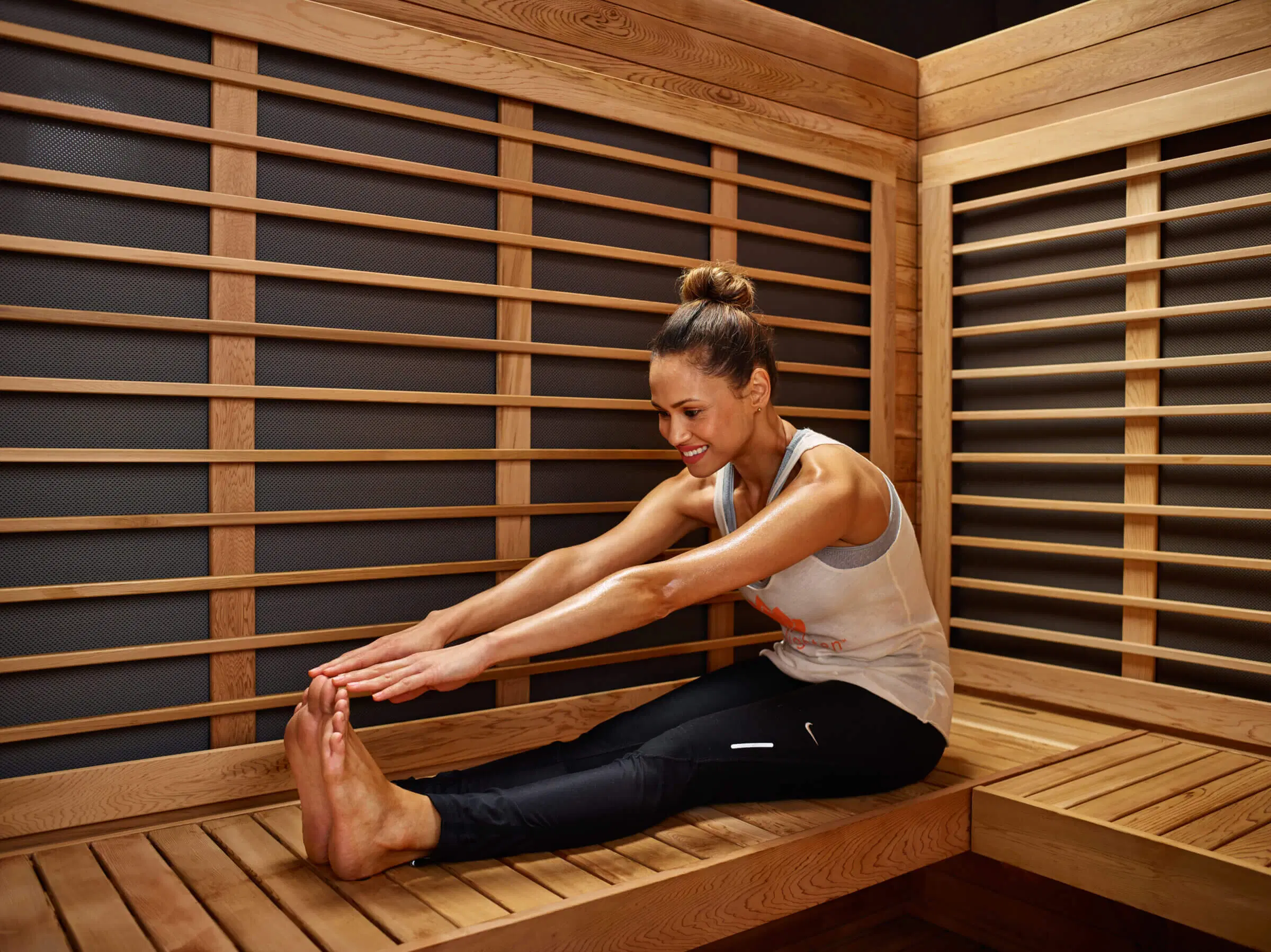
The use of red and near infrared light (generally known as photobiomodulation) can not only decrease inflammation and oxidative stress but it can also increase muscle mass gained after training.
In other words, you’re not going to turn into the Hulk by using your infrared sauna every day, but if you do it in combination with your regular workout routine, you’ll likely see greater gains in muscle mass than without, based on this review of 46 clinical trials on the subject.
Additionally, a study conducted by researchers at Auburn University concluded that using Sunlighten’s mPulse full-spectrum infrared sauna increased the flexibility and range of motion of study participants by up to 300%. The increased range of motion led to better joint mobility, less friction in the joints and diminished stiffness.
That’s really incredible, but it’s worth noting that those stretches were performed during sauna sessions and during times of increased blood flow.
You can learn more about that model in my mPulse review.
10. Improves Skin Health
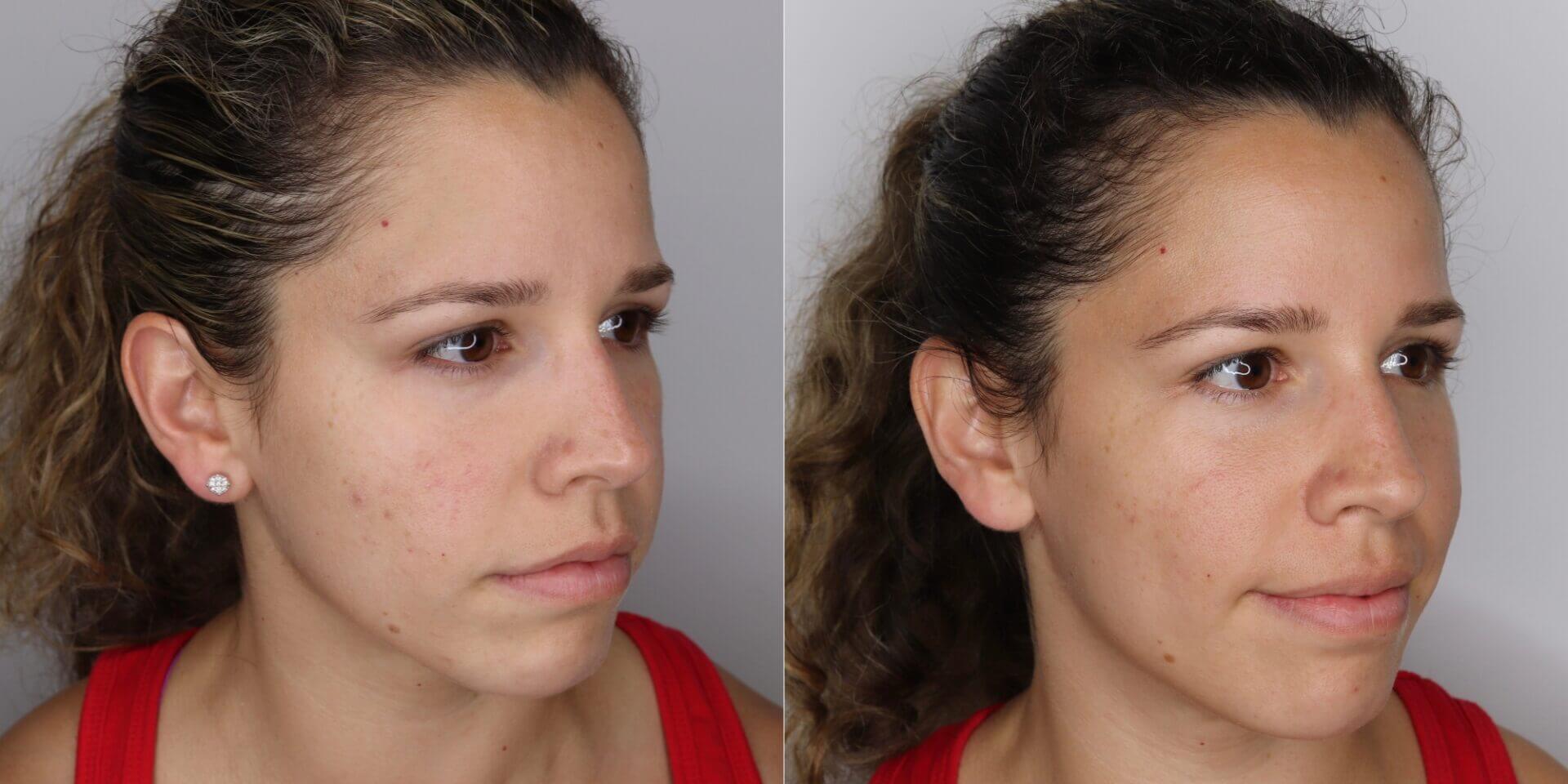
I’ve heard people say that using an infrared sauna has anti-aging benefits. Unfortunately, that doesn’t mean regular sauna use can turn back your biological clock. However, there is scientific evidence that red and near infrared light in the 611-650 and 670-850 nanometer (nm) spectrum has a positive impact on skin renewal, cell health and tissue growth.
Specifically, infrared waves in the 633 nm and 830 nm spectrum can easily penetrate the skin, where fibroblast cells absorb the light to stimulate the production of collagen and elastin — two components that can help improve skin health and make you look younger.
Coincidentally, my wife started using SolaWave several months ago. It’s a red light therapy tool that’s supposed to improve skin complexion, and based on the before and after photos we took (see above), the technology appears to be working.
On a side note, if improving skin health is your primary goal, you could also consider investing in a high-quality red light therapy panel that emits infrared rays. The panel I’m currently using is the MitoPRO 1500 from Mito Red Light.
11. Causes a Spike in Growth Hormones (hGh)
Studies have shown that the heat stress induced by sauna bathing can cause a dramatic spike in human growth hormone (hGh).
For example, two 20-minute sauna sessions at 80 °C (176 °F) separated by a 30-minute cooling period elevated growth hormone levels 2-fold over baseline, but two 15-minute sauna sessions at 100 °C (212 °F) dry heat separated by a 30-minute cooling period resulted in a 5-fold increase in growth hormone .
ScienceDirect: Sauna use as a lifestyle practice to extend healthspan.
An even more dramatic increase in growth hormone secretion was observed in a study involving men and women who were exposed to two one-hour sauna sessions per day for seven days, causing a 16-fold increase in growth hormone levels.
Growth hormones stimulate growth in nearly every tissue and organ (especially in children) and impact your metabolism. That’s why some athletes use growth hormones to help build muscle tissue or recovery quicker from strenuous workouts.
While the use of exogenous growth hormones is prohibited by the World Anti-Doping Agency (WADA), you can leverage hermetic stressors, including sauna bathing, to naturally increase your growth hormone levels.
The Limits of Infrared Saunas
Despite all the benefits of infrared saunas, they’re not a miracle tool that will magically make you look 20 years younger, cure your arthritis or remove all of the toxins your body has stored due to poor lifestyle choices.
I consider infrared saunas to be a positive stressor — much like fasting, exercise or a cold plunge — that can help me become more resilient through adaptation and immune system support, recover quicker after intense workouts, support my skin health and more.
They’re one piece of the puzzle that makes up my healthy lifestyle.
Don’t make the mistake of living an unhealthy life filled with over-processed junk food, poor sleep and a lack of exercise (just to name a few bad habits) and then expect your infrared sauna to mitigate all of that.
Any positive intervention, including sauna use, can likely mitigate some of the negative factors in your life. But if you want to make a real dent, you have to make the right choices in all areas of your life, including nutrition, sleep, stress management and exercise.
Infrared Sauna Safety and Potential Side Effects
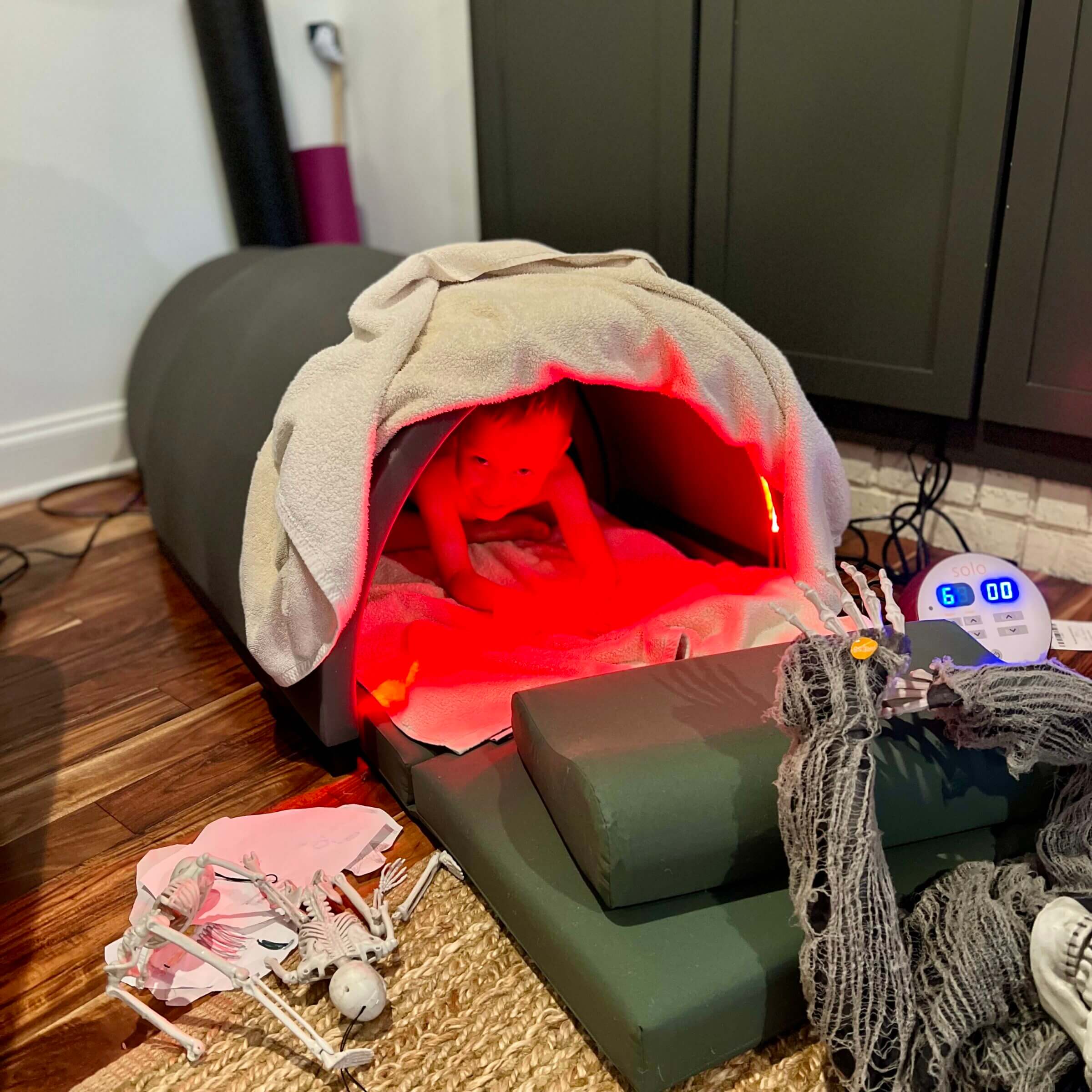
The light emitted by infrared saunas is generally safe. According to the Mayo Clinic, “no harmful effects have been reported with infrared saunas.”
However, there are a few potential side effects to consider.
Infrared Saunas Stress Your Cardiovascular System
Infrared saunas stress your body and cardiovascular system by applying energy (in the form of heat) to your cells. While I consider that good stress (much like exercise or fasting), it can be overwhelming if you’re already stressed out, if your body is fighting a disease, or if you have a diagnosed heart disease.
That’s why I don’t use a sauna, jump into my cold plunge or fast on days when I feel run down — I want to give my body ample opportunities to recover without piling on additional stressors.
Additionally, I would talk to your doctor before using an infrared sauna if you suffer from low blood pressure or have other cardiovascular conditions.
Your Perception of Heat Might be Different Than Mine
Everyone has a slightly different perception of heat. The temperature you set your infrared sauna to, and the time you spend in it, might be different from someone else. For example, my wife has no issues staying in our Sunlighten mPulse infrared sauna for 30 minutes or longer on its highest settings. I feel like I want to get out after about 20 minutes. 30 minutes is pushing it for me.
On the flip side, I have no issues spending a couple of minutes in ice cold water, whereas my wife can’t handle more than a few seconds.
If hormesis (adapting to stressors like infrared heat) is your goal, allow your sessions to become uncomfortable while also staying safe. You don’t want to spend an hour in an infrared sauna if you feel like you’re going to pass out due to heat exhaustion.
Can Infrared Light Harm Your Eyes?
Additionally, I’ve read studies that suggest near infrared radiation — such as the type that glass, iron and steel workers are exposed to — can damage the eyes by causing cataracts and other issues. That has led some people to think that full-spectrum saunas that emit near infrared light can also damage the eyes.
Obviously, you can’t compare subjecting yourself to a 30-minute sauna session that exposes you to low-temperature near infrared radiation with a job welding steel eight hours a day for 40 years. As is so often the case, the dosage makes the poison.
For example, daily exposure to sunlight is incredibly important to your health, but if you stay in the sun for hours without wearing sunscreen, it’ll damage your skin and you might develop cancer in the long run.
The same principle applies to exposing yourself to the full spectrum of infrared light. As you might remember from the beginning of this article, IR light makes up over half of the light emitted by the sun.
Infrared Saunas vs. Traditional Saunas

Traditional saunas heat the ambient air (and your skin) from the outside, whereas infrared saunas carry energy through your skin to heat you from the inside. As a result, traditional saunas usually have to be hotter than infrared saunas to achieve similar benefits.
For example, the Finnish saunas I used as a professional athlete often reached temperatures of over 100 degrees Celsius (212 F). On the other hand, my infrared sauna tops out at 150 degrees Fahrenheit.
The advantage of infrared saunas is that they achieve the same core benefits (e.g., improved circulation, increased heart rate, etc.) as traditional saunas, but with lower temperatures. That means you can likely spend more time in an infrared sauna.
Additionally, full-spectrum infrared saunas offer benefits such as skin rejuvenation and collagen production in your epidermis (thanks to the near infrared light) that traditional saunas do not.
Personally, I think you can get great benefits from either type of sauna, but I prefer the lower maintenance requirements of infrared saunas.
I talked to some of my friends and they swear by traditional options because they like both the humidity and the ritual of pouring water over hot stones to generate steam (which is often a feature of Finish saunas). I get that, and it’s what I grew up with. But from a practical perspective, I prefer turning on my IR sauna through the push of a button, and not having to worry about ventilation and other issues associated with high humidity environments.
If you’d like to take a deeper dive into the relative pros and cons, check out my dedicated article on infrared vs. traditional saunas.
Update: We recently purchased a six-person traditional sauna from Redwood Outdoors, and have been using it alongside our infrared sauna. While the two cabins offer similar health benefits, they provide different experiences and we alternate between them depending on the specific use case.
Infrared Sauna Benefit List FAQs
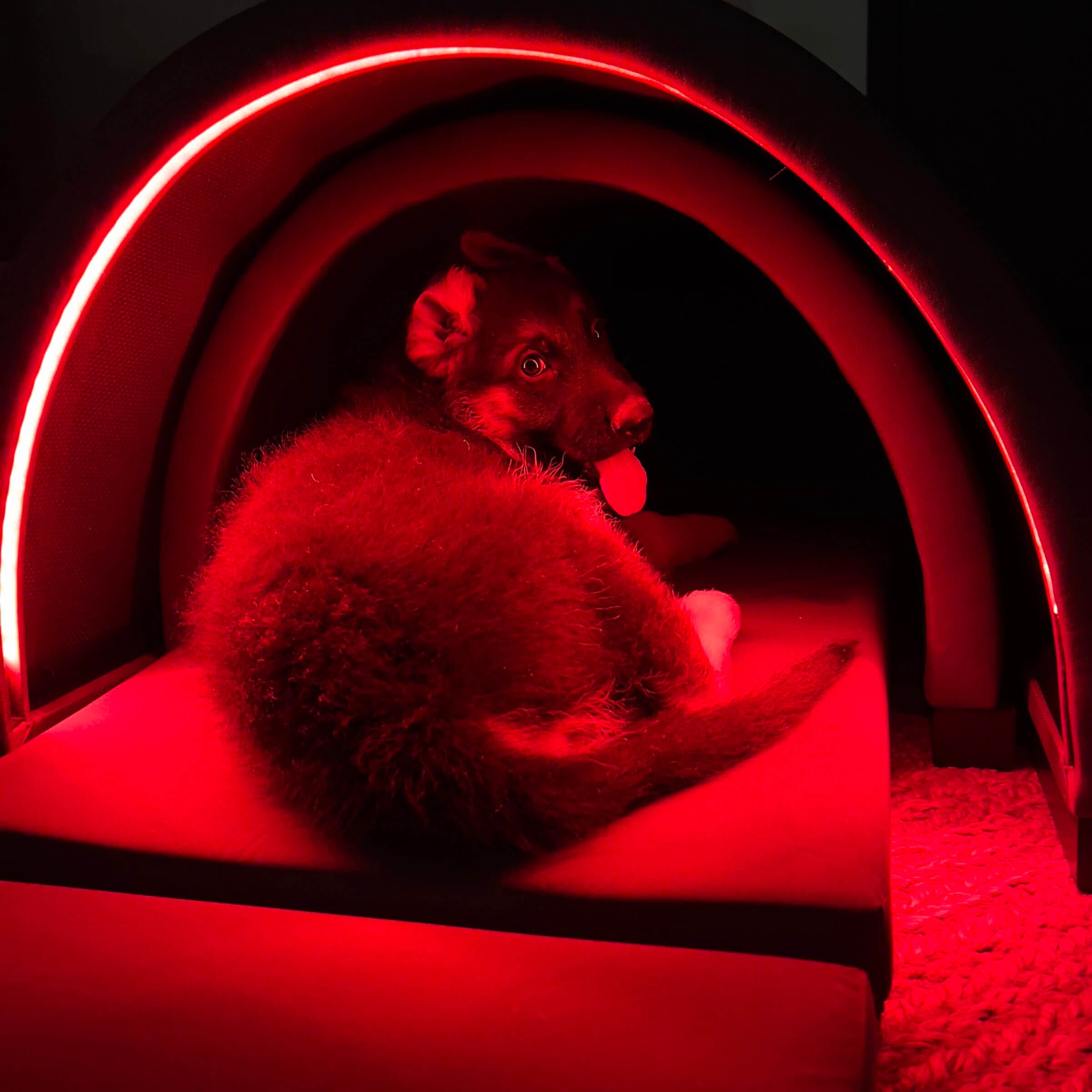
Infrared saunas are generally safe but there are a few considerations, as I discussed above. Make sure to drink plenty of water before and after using an infrared sauna to avoid dehydration. I’d also recommend avoiding sauna sessions at high heat on days you feel run down, because infrared light can be a stressor.
Yes, infrared saunas emit electromagnetic fields (EMFs) and electromagnetic radiation (EMR). In fact, all light (visible or otherwise) is part of the electromagnetic spectrum.
What’s important is that you check with the manufacturer of your sauna brand to see how the level of EMFs their sauna emits. Sunlighten (the brand I’m familiar with) has all of its saunas checked by third-party labs to ensure low EMF emissions. You can learn more about the test results on this page.
Based on the research of metabolic scientist Susanna Søberg, you get the most benefits by spending 57 minutes or more per week in a sauna.
I use my infrared sauna several times a week, and I combine that use with taking cold plunges. I try to avoid getting used to it too much, because if I do, it becomes less effective from the perspective of hormesis. That’s the same reason why I don’t fast, do CrossFit or take a cold plunge every day. I want to keep my body “on edge” so I continue adapting and become more resilient.
You certainly can, depending on the benefits you’re trying to accomplish. However, it’s important to keep in mind that the body becomes heat-adapted quickly, which diminishes some of the benefits of sauna bathing.
For example, studies have shown that you can reap a 16-fold increase in growth hormone production if you sauna bathe once a week for 30 minutes four times on the same day.
But if you sauna bathe more regularly, you won’t get the same growth hormone release because the body grows accustomed to the stressor (i.e., the heat).
That said, if your goal is to lose weight, you can certainly use your sauna twice a day. Just make sure you hydrate properly to reduce your risk of hyperthermia.
You can enjoy an infrared sauna several times a week when combined with proper lifestyle choices that are the primary driver behind losing weight.
In other words, if you don’t follow an appropriate diet that’s centered around the very foods humans have eaten for millions of years (one that’s devoid of industrial seed oils and processed junk food), paired with quality sleep and regular exercise, then using an infrared sauna will likely not deliver the results you’re looking for.
As I mentioned above, I burn less than 200 extra calories during a 30 minute-sauna session. While that’s not bad considering that I didn’t have to be physically active for it, it’s also not a whole lot if your dietary lifestyle includes high-calorie junk food with low nutrient density. For example, a Pumpkin Spice Frappuccino from Starbucks has between 290 and 510 calories (depending on the size).
That’s why I keep saying that weight loss is a byproduct of a healthy lifestyle that infrared saunas can be a part of. But don’t expect an infrared sauna to compensate for poor lifestyle choices made on a daily basis.
Yes, depending on your sensitivity to heat and how close you get to the heaters, infrared saunas can burn your skin or cause irritation. However, I’ve never gotten any burns in my Sunlighten sauna, even though I’ve touched the heaters several times (mostly on purpose to see how hot they get).
Yes, studies have shown that infrared light can support the body in excreting certain toxins, such as heavy metals, by making you sweat profusely.
An infrared sauna session increases blood flow, which can temporarily reduce pain. The increased blood circulation can also speed up wound healing and recovery. However, it’s important that you identify and fix the root cause of your pain, because that’s not something an infrared sauna can do.
There are studies that suggest that phototherapy using infrared light in combination with exercise “can improve cellular activation, which is an important factor for the treatment of cellulite.” Fortunately, I don’t have cellulite so I have no hands-on experience with such treatments.
It’s important to understand that psoriasis is an autoimmune inflammatory skin disease, caused by a dysfunctional (overactive) immune system that attacks healthy skin cells.
I’m a firm believer that autoimmune conditions are caused by lifestyle factors, including poor dietary choices and exposure to environmental toxins. Because of that belief, my first course of action would be to remove all inflammatory foods (predominantly plants) and environmental toxins from your diet and environment. If you do that, chances are your skin issues will resolve themselves.
Using an infrared sauna can be an excellent tool to support these efforts, but you still have to remove the root cause of your condition.
There are some studies that suggest that phototherapy using different wavelengths (e.g., red light therapy) can help with the treatment of psoriasis, eczema and other skin conditions.
In contrast to far infrared saunas, which emit only a portion of the infrared light spectrum, full-spectrum infrared saunas include heaters that emit a combination of near, mid and far infrared light. Unfortunately, full-spectrum infrared saunas are relatively rare. One model is the Sunlighten mPulse 3 in 1, which I recently purchased — you can learn more about it in my mPulse review.
Full-spectrum infrared saunas are also significantly more expensive than other types. Whether they’re worth the money depends on your goals and use cases. I cover this in more detail in my article on how to choose an infrared sauna, but feel free to leave a comment if you have any questions about which type of sauna you should buy.
No, there are differences between the benefits provided by sauna blankets and infrared saunas equipped with full-size heaters.
For example, sauna blankets emit far less infrared radiation than traditional infrared saunas. Instead, sauna blankets use heat-coated wires to create extremely hot surfaces that make you sweat. That type of heat transfer is called conduction. Walk-in infrared saunas emit radiant heat.
The amount of energy (and heat) emitted via infrared rays is called emissivity, and most sauna blankets are between 84% and 88% emissive. In comparison, the Sunlighten sauna cabin we have in our backyard features heaters with 95% to 99% emissivity.
The higher the emissivity the more benefits the infrared rays deliver, even at lower temperatures. You can learn more about that in my Sun Home Saunas Infrared Sauna Blanket Review.
Wrap-Up: Infrared Sauna Health Benefits
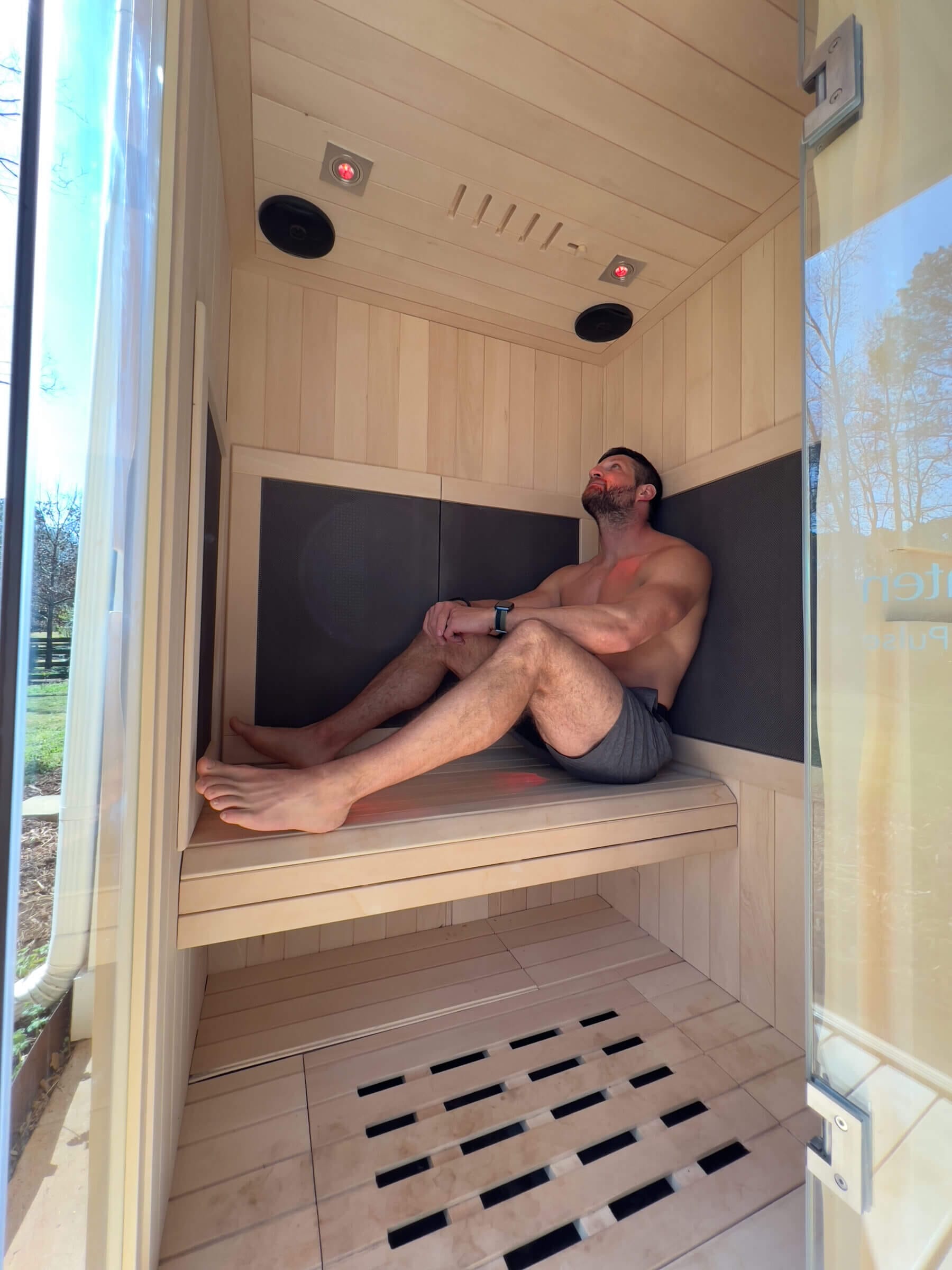
Based on everything I’ve learned about the health benefits of infrared light and infrared saunas, as well as the positive experience I’ve had with my Sunlighten infrared sauna, I highly recommend phototherapy as a wellness tool.
Infrared saunas are certainly not a cure for every disease known to mankind, but they do provide plenty of scientifically-validated benefits, making them worth your consideration. And you can potentially amplify those benefits by using saunas and ice baths together.
I jumped onto the infrared sauna bandwagon at the end of 2021 and have been enjoying my daily sauna sessions, combined with regular cold plunges, ever since.
Do you have a sauna at home, or are you considering getting one? If so, what are your thoughts on infrared vs. traditional saunas? Let me know by leaving a comment below.
Ready to pull the trigger? Check out my infrared sauna buying guide and my list of the best infrared saunas to learn how to choose the model that’s right for your particular space and goals.

Michael Kummer is a healthy living enthusiast and CrossFit athlete whose goal is to help people achieve optimal health by bridging the gap between ancestral living and the demands of modern society.

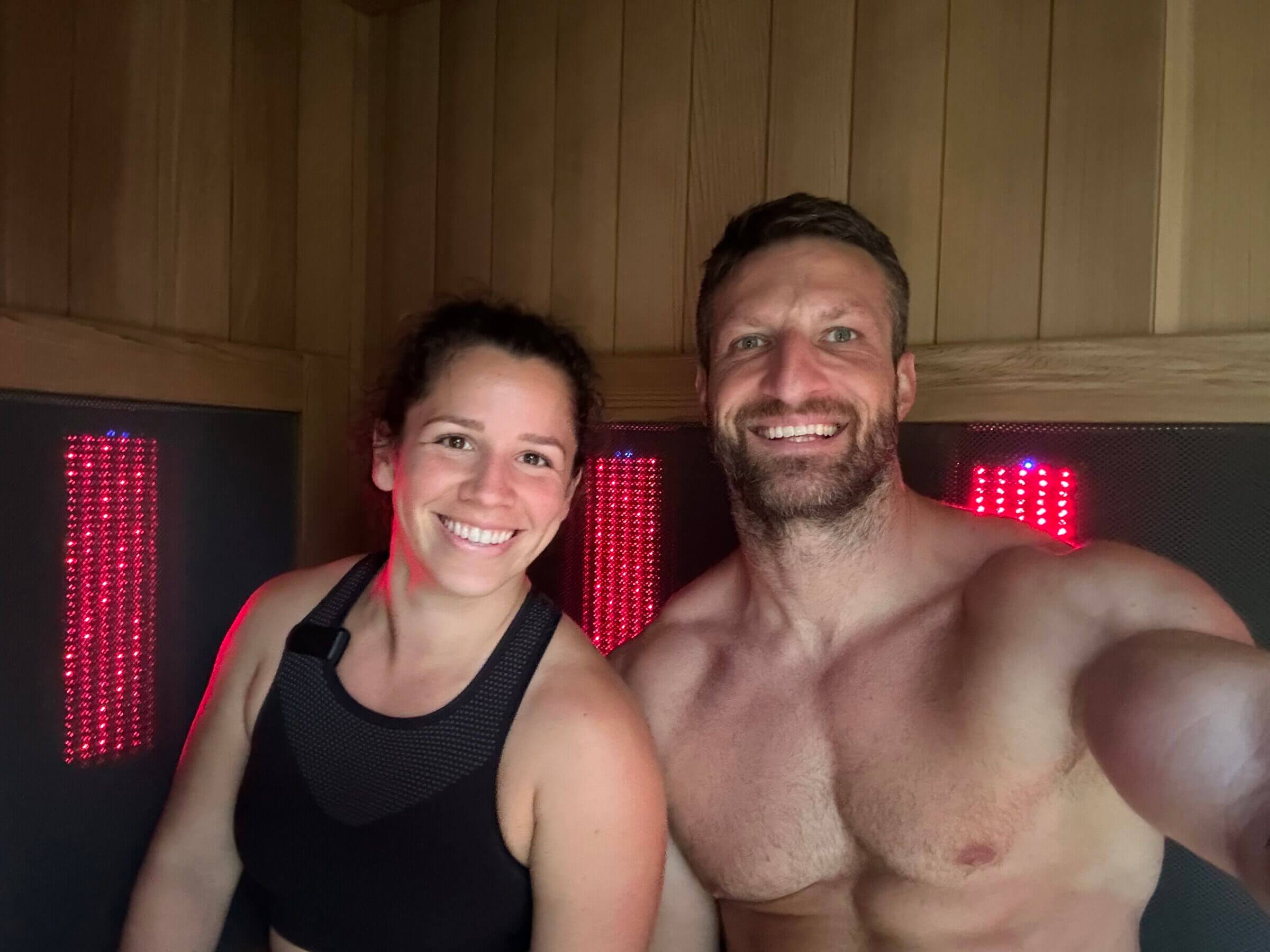

Cleanliness is next to godliness and for me the most convenient and economical way is an infrared sauna. We know the basics of deterring viral infection is high temperature and the other benefits are an added bonus. The sauna regime, fresh air, exercises and healthy eating should be promoted as a way of life. It should have been used during Covid rather than rushing to drug treatment and cooping people up. The world is a warzone,we can be ignorant victims or otherwise.
My experience with infrared saunas, is that the experience is not a real sweaty experience. I was in a Sweaty Goat sauna, which goes up to 165 F. I was sweating at 150 degrees but not like a traditional sauna(without water) at 170 degrees where I sweat profusely. To me a sauna is all about sweating so I am not sure an infrared sauna is for me.
Hi Mike,
the ambient temperature inside an IR sauna is much less important than the amount of energy the heaters can transfer into your tissue. The latter is determined by the emissivity of the heaters and the distance between the heaters and your body. With heaters that feature a 98%+ emissivity and ambient temperatures over 150F you’ll sweat if you maintain a proper distance from the heaters. Unfortunately, most IR saunas on the market have much lower emissivity levels of 86% or so. That yields a much lower heat transfer than high-emissivity saunas.
Cheers,
Michael
I have a sunlighten sauna same as the one you have, after using it I experience an inner vibration in my head like a quivering inside which happens mostly at night and passing from sleep to waking. I stopped using it for a while and these symptoms went away but started again and noticed they came back. Was wondering if anyone else has had a similar experience?
Hey A,
I’ve never experienced or heard of such symptoms (related to sauna use or otherwise). Maybe someone else reading this can chime in.
Cheers,
Michael
Hi,
I was curious why you didn’t give an opinion about Dry saunas? Does the dry sauna have as much benefit as the steam sauna? I realize the infrared will be different.
Hi Stephanie,
I cover those differences in https://michaelkummer.com/steam-vs-infrared-sauna/. Here is the thing though: some people consider a traditional sauna a dry sauna but I call it a wet sauna because I always pour water over the hot stones in the oven which creates hot steam and so calling that a dry sauna wouldn’t make sense. However, if you skip the water, you’d have a dry sauna and most of the benefits (- skin hydration would still apply).
Cheers,
Michael
Hi! What kind of sauna do you have and where did you get it?
Hi Zea,
I’m using the Sunlighten mPulse Believe. See https://michaelkummer.com/sunlighten-mpulse-review/ and https://youtu.be/d4WrHMvclKU.
Cheers,
Michael
Sir, a well written easy to understand blog on saunas. However, are you sure on your near vs far that you didn’t mix the two up? Every other source that I have perused puts far sauna heat penetration at about 5 cm and the near at about 9 inches. That is one reason near saunas are so much pricier.
Thanks Curt, I appreciate it!
I don’t think NIR penetrates deeper than FAR because the former has a shorter wavelength. It’s like with WiFi – 5 GHz (shorter wavelength) has more energy but less reach because the short waves get blocked more easily. 2.4 GHz has less energy (longer wavelengths) that provide better reach. At least, that’s my understanding of how the physics work.
Here is an article that discusses the issue: https://gembared.com/blogs/musings/how-deep-does-red-and-near-infrared-wavelengths-penetrate-into-the-body-marketing-vs-science